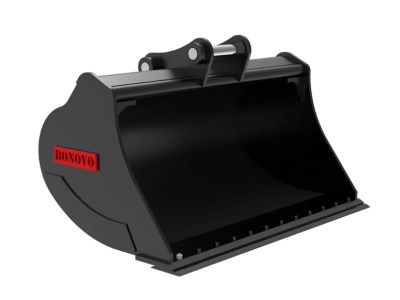Digging can be a difficult and time-consuming task, especially when you run into obstacles along the way. These things need to be planned meticulously and you must have the necessary tools in order to do it safely. A ditch bucket by bonovo Group is one tool that can make a big difference. An excavator is a machine used to dig trenches and ditches Buckets, which usually has different attachments: toiletcup/bucket. A simple tutorial for Using ditch bucket to easy digging jobs.
Ditch Bucket Digging Techniques
Working as a contractor can mean putting in long hours of hard work, especially for excavation jobs but with the aids like ditch bucket are going to make your job a lot easier. Important things to remember;
Inspect the Excavator: Ensure that your excavator is in working order before you get to work. This includes inspecting the hydraulic system, tracks, and more. In the event that any part is not working, you could run into issues when you are digging.
To Find the buried Treasure: – Make sure to check with your other utility services like Gas, Water or Electric before you start digging. Contact local utilities to inquire about the safety of excavating in this area. For safe work, this step is very necessary so that no accidents would happen.
Prepare in Advance: Spend time specifically planning how you will approach digging work. Plan out where you need to be digging and how long the trench or ditch should run. With the help of location, and length information will prevent you from digging in a random way thus saving time.
Forget hard soil: Sometimes, you haven't reached stone or rock on digging next to impossible. A ditch bucket can be used to rip up these hard materials. This will make soil excavation so much easier on your back and drastically shorten the time you spend doing it.
Protective Gear: Your safety is of paramount importance while digging. Wear protective equipment such as hard hats, safety gloves and heavy work boots. This gear will be for your own safety as you work.
How to Use a Ditch Bucket
Now that you have some tips, let's talk about the steps on how to use a ditch bucket backhoe for digging.
Locate the Area: Make sure that before you begin to dig, verify if it is safe. Before you start digging a hole, try to catch if there are any underground utilities in the place. It is an essential step to keep all the lines secure while piecing together your change part.
Install the Ditch Bucket: The next step is to install that ditch bucket once it's in place on the excavator. Ensure it is seated well and will not vibrate loose as you work.
Lower arm of excavator until ditch bucket contacts ground This is where you start digging.
Once you have the machine in place, move it to where ever you are going to dig and start using your ditch bucket. Be aware of the depth to which you are digging and, when necessary use backhoe bucket to penetrate hard soil or rock.
Soil Watch: Pay close attention to the soil while you dig. If the dirt starts to move out of place or seems unstable in any way, such as enough cracks appearing on the surface stop digging. The first most vital thing is to preserve the area.
Step 6: Complete the excavating when you've dug to sufficient depth and length, remove trench or ditch bucket from backhoe. Now, you can go over to the other side where you are going for another floor of your project.
Guide to Using a Ditch Bucket
To utilize a ditch bucket effectively, you will need to adhere to some useful suggestions:
If you are planning anything in advance with the excavation it is to plan ahead, make sure that your work across this area will have a purpose within its use or design. You need to be aware of more than just where you will have to dig the trench or ditch, but also exactly how long it is going go.
Use the Right Size Ditch Bucket: Make sure you use a ditch bucket of appropriate size for your work. 2) A Smaller Bucket — If you plan on working in a tight space, then smaller bucket may be the right choice.
Dig at Farthest Point: One starts digging the trench from a spot that is lowest in elevation. This will prevent water from splashing down while excavating, causing problems.
Break Hard Soil: Whenever you meet hard soil or rocks, utilize the ditch bucket to break them open. That will only help to ensure that the process of digging is quick and easy.
Reason why you should work slowly: – It is used when digging so that undue excavation. Moving slowly is going to keep the integrity of your excavation and prevent any accidents.
Hear the Excavator: Never ignore any warning sounds or lights. If you hear any unusual noises, power down immediately and investigate for proper operation.
Safety Gear: Lastly, always remember to keep your safety gear (such as hard hats and work gloves) nearby from you when digging. This will make you safe while at work.

